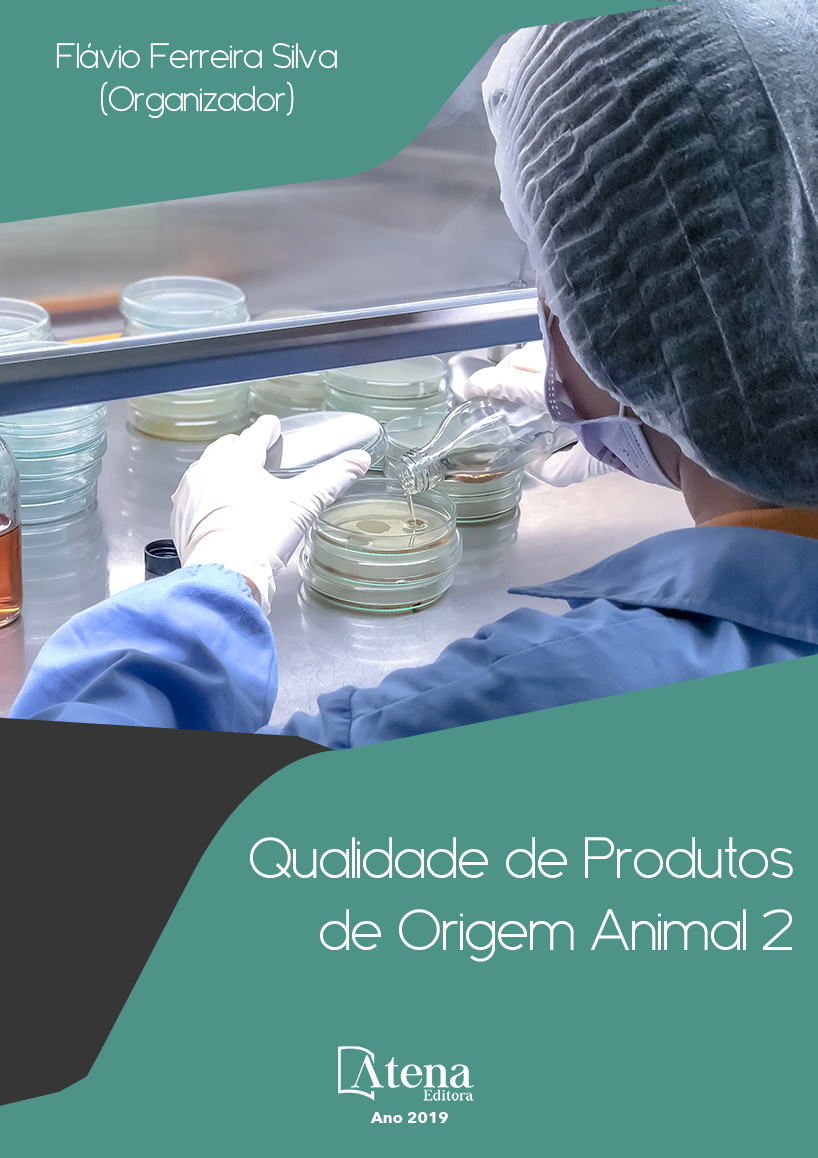
EFEITO DO REVESTIMENTO EDÍVEL USANDO PRÓPOLIS VERDE E ÓLEO DE CRAVO NA CONSERVAÇÃO DE SURURU REFRIGERADO
Este trabalho teve como objetivo
avaliar o aumento da vida útil em amostras de
sururu (Mytella guyanensis) refrigerado usando
extrato de própolis verde e óleo de cravo. Foram
elaboradas três soluções de revestimento: óleo
essencial de cravo a 2 mg m-1 (OEC); própolis
verde a 2% (PV2%) e própolis verde a 2% +
OEC a 2 mg mL-1 (PV2%+OEC). Amostras
de sururu sem revestimento foi usado como
controle. As amostras foram embaladas e
armazenadas a 5o
C por 12 dias e realizadas
análises microbiológicas (bactérias aeróbias
mesófilas, coliformes a 35o
C e a 45o
C) e físicoquímicas (bases nitrogenadas voláteis totais -
BNVT e pH) em intervalos de 0, 4, 8 e 12 dias.
Os revestimentos edíveis apresentaram baixa
redução na carga microbiana de mesófilos,
porém com redução significativa (p<0,05) para
os coliformes a 45o
C (PV2% > PV2%+OEC
> OEC). Para as BNVT o melhor tratamento
na deterioração do sururu foi o PV2%+OEC,
com menor valor de BNVT, embora sem
diferença significa para os demais tratamentos
e diferindo do controle (p<0,05). A aplicação
de revestimento edível usando PV2% e
PV2%+OEC é uma alternativa eficiente para a
redução da carga microbiana de coliformes em amostras de sururu refrigerado pois aumenta sua vida útil em 10 dias.
EFEITO DO REVESTIMENTO EDÍVEL USANDO PRÓPOLIS VERDE E ÓLEO DE CRAVO NA CONSERVAÇÃO DE SURURU REFRIGERADO
-
DOI: 10.22533/at.ed.6661912115
-
Palavras-chave: Moluscos bivalves; Atividade antimicrobiana; Coliformes.
-
Keywords: Shellfish; antimicrobian activity; coliforms.
-
Abstract:
The aim of this paper was to evaluate the increase of shelf life in samples
of chilled sururu (Mytella guyanensis) using green propolis extract and clove oil. Three
coating solutions were prepared: clove essential oil at 2 mg m-1 (OEC); 2% green
propolis (PV2%) and 2% green propolis + 2 mg OEC mL-1 (PV2% + OEC). Uncoated
sururu samples were used as a control. Samples were packaged and stored at 5o
C
for 12 days and microbiological (aerobic mesophilic bacteria, coliforms at 35o
C and
45o
C) and physicochemical (total volatile base and pH) analyzes were performed at 0,
4, 8 and 12 days intervals. Edible coatings showed low reduction in microbial load of
mesophiles, but with significant reduction (p <0.05) for coliforms at 45o
C (PV2%> PV2%
+ OEC> OEC). For BNVT the best treatment in sururu deterioration was PV2% + OEC,
with the lowest BNVT value, although no difference means for the other treatments and
differing from the control (p <0.05). The application of edible coating using PV2% and
PV2% + OEC is an efficient alternative for reducing coliforms microbial load in chilled
sururu samples as it increases their shelf life by 10 days
-
Número de páginas: 15
- Tamyres Pereira Lopes de Oliveira
- Jessica Ferreira Mafra
- Leydiane da Paixão Serra
- Mariza Alves Ferreira
- Aline Simões da Rocha Bispo
- Norma Suely Evangelista-Barreto
- TIAGO SAMPAIO DE SANTANA


